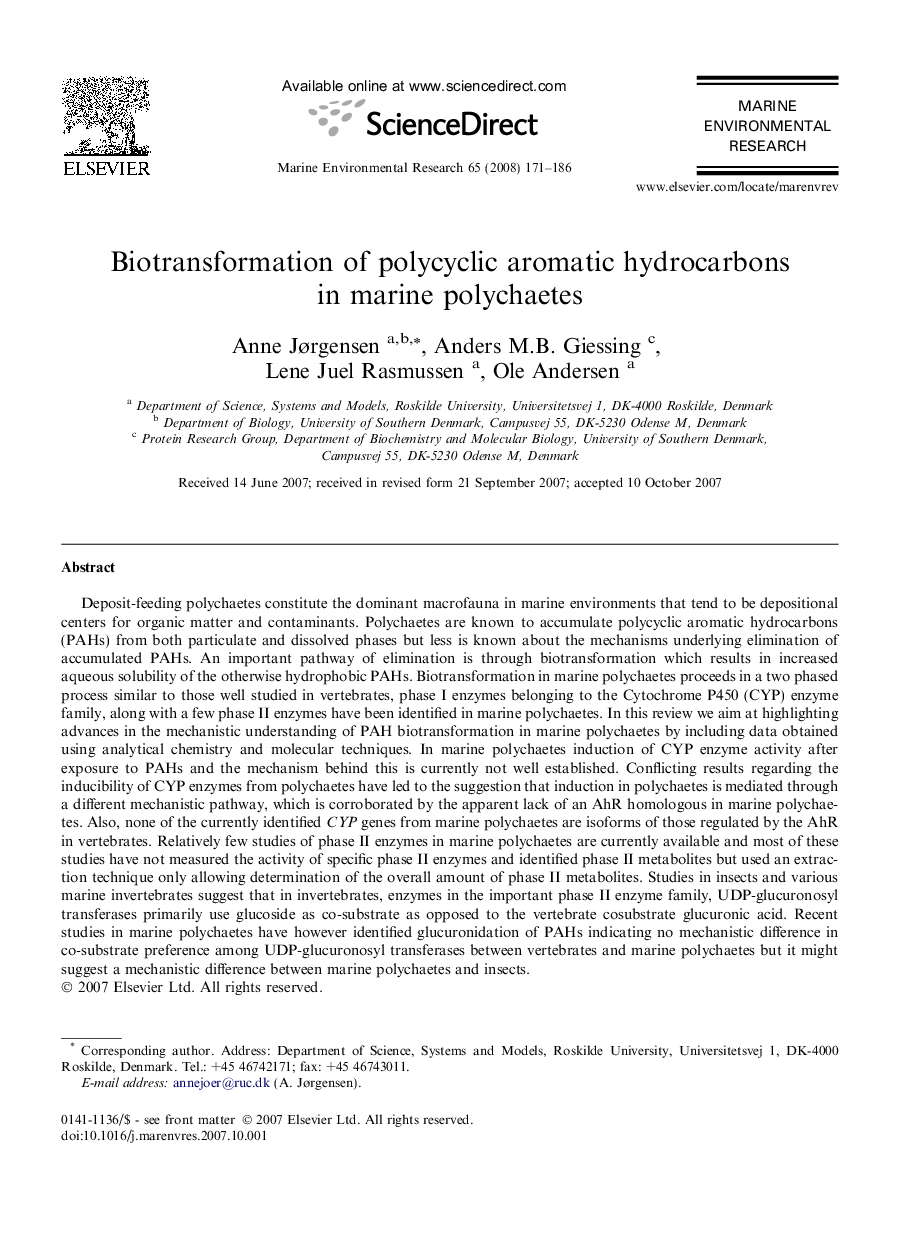| Article ID | Journal | Published Year | Pages | File Type |
|---|---|---|---|---|
| 4551703 | Marine Environmental Research | 2008 | 16 Pages |
Deposit-feeding polychaetes constitute the dominant macrofauna in marine environments that tend to be depositional centers for organic matter and contaminants. Polychaetes are known to accumulate polycyclic aromatic hydrocarbons (PAHs) from both particulate and dissolved phases but less is known about the mechanisms underlying elimination of accumulated PAHs. An important pathway of elimination is through biotransformation which results in increased aqueous solubility of the otherwise hydrophobic PAHs. Biotransformation in marine polychaetes proceeds in a two phased process similar to those well studied in vertebrates, phase I enzymes belonging to the Cytochrome P450 (CYP) enzyme family, along with a few phase II enzymes have been identified in marine polychaetes. In this review we aim at highlighting advances in the mechanistic understanding of PAH biotransformation in marine polychaetes by including data obtained using analytical chemistry and molecular techniques. In marine polychaetes induction of CYP enzyme activity after exposure to PAHs and the mechanism behind this is currently not well established. Conflicting results regarding the inducibility of CYP enzymes from polychaetes have led to the suggestion that induction in polychaetes is mediated through a different mechanistic pathway, which is corroborated by the apparent lack of an AhR homologous in marine polychaetes. Also, none of the currently identified CYP genes from marine polychaetes are isoforms of those regulated by the AhR in vertebrates. Relatively few studies of phase II enzymes in marine polychaetes are currently available and most of these studies have not measured the activity of specific phase II enzymes and identified phase II metabolites but used an extraction technique only allowing determination of the overall amount of phase II metabolites. Studies in insects and various marine invertebrates suggest that in invertebrates, enzymes in the important phase II enzyme family, UDP-glucuronosyl transferases primarily use glucoside as co-substrate as opposed to the vertebrate cosubstrate glucuronic acid. Recent studies in marine polychaetes have however identified glucuronidation of PAHs indicating no mechanistic difference in co-substrate preference among UDP-glucuronosyl transferases between vertebrates and marine polychaetes but it might suggest a mechanistic difference between marine polychaetes and insects.
